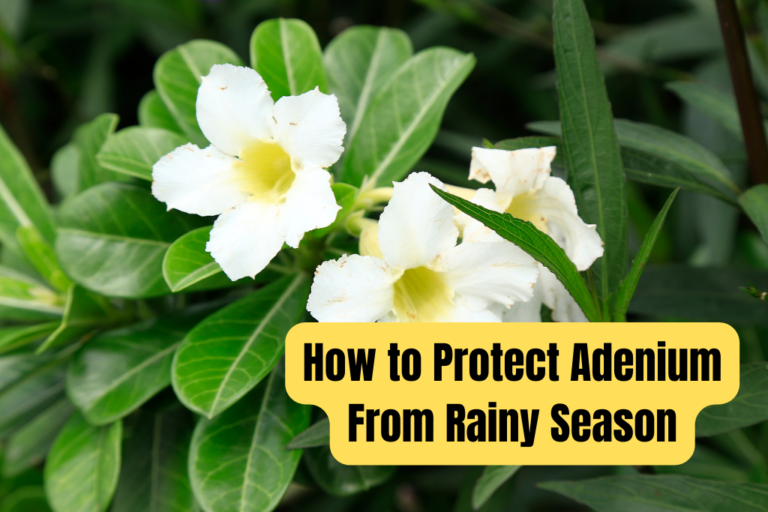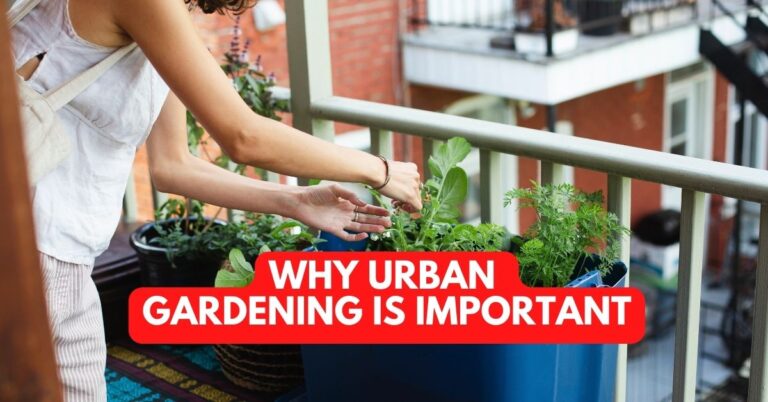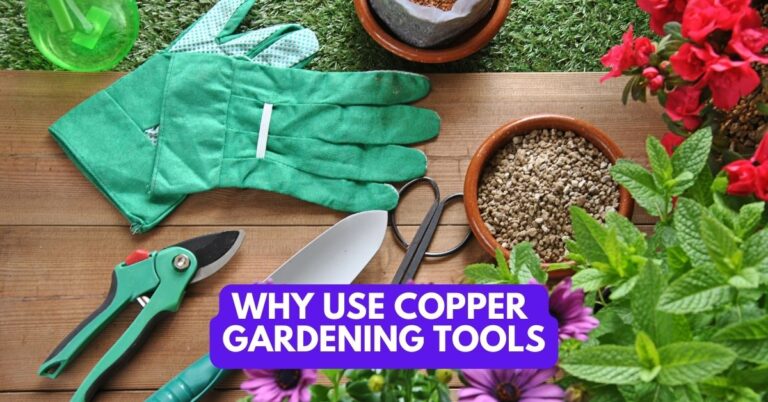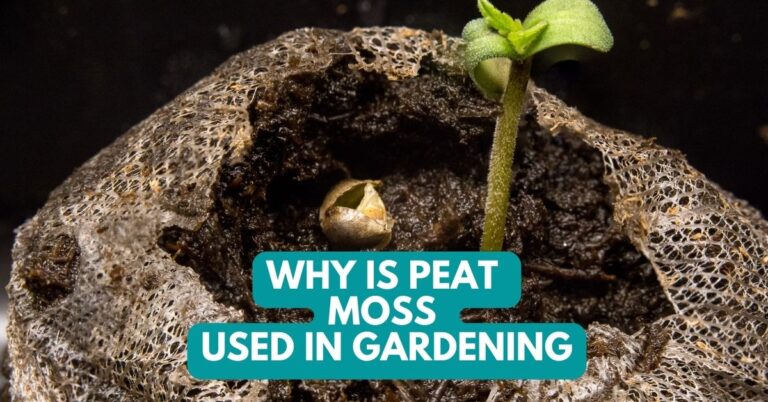6 Flower Seeds You Can Sow In July For Late-Season Color
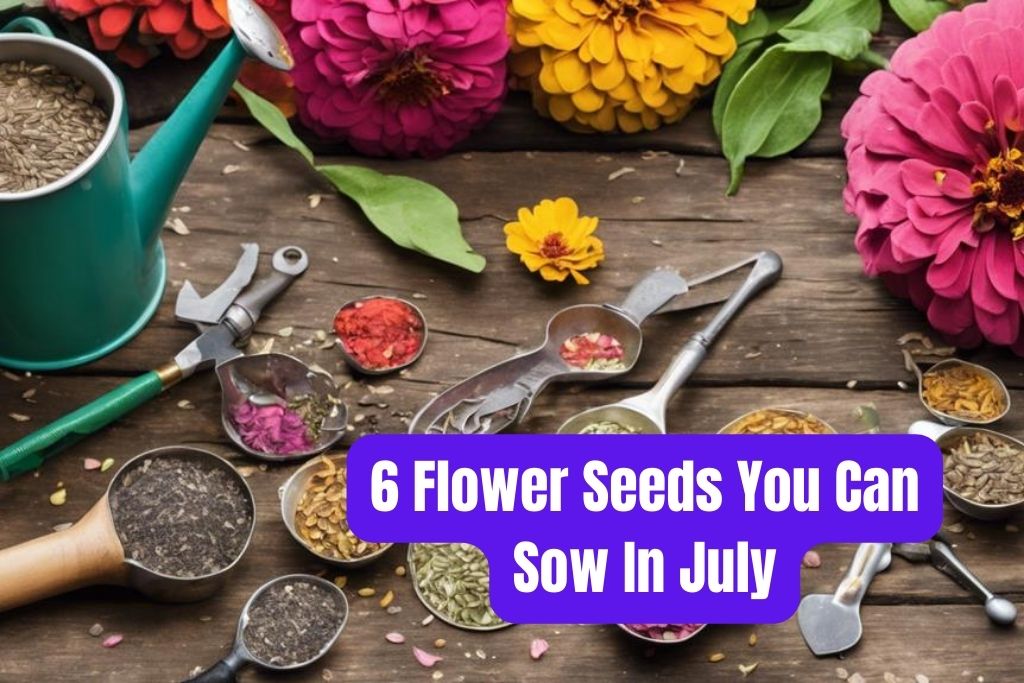
In July, you can sow Zinnias, Cosmos, Sunflowers, Marigolds, Nasturtiums, and Bachelor’s Buttons for a pop of late-season color in your garden. Zinnias offer vibrant blooms in various hues, while Cosmos dazzle with daisy-like flowers. Sunflowers provide a bold touch and attract bees and birds. Marigolds bring yellow, orange, and red blossoms, perfect for sunny spots. Nasturtiums bloom in fiery shades, acting as natural pest repellents. Finally, Bachelor’s Buttons charm with blue, pink, and white flowers. Try planting these seeds for a colorful late-season garden!
Zinnias
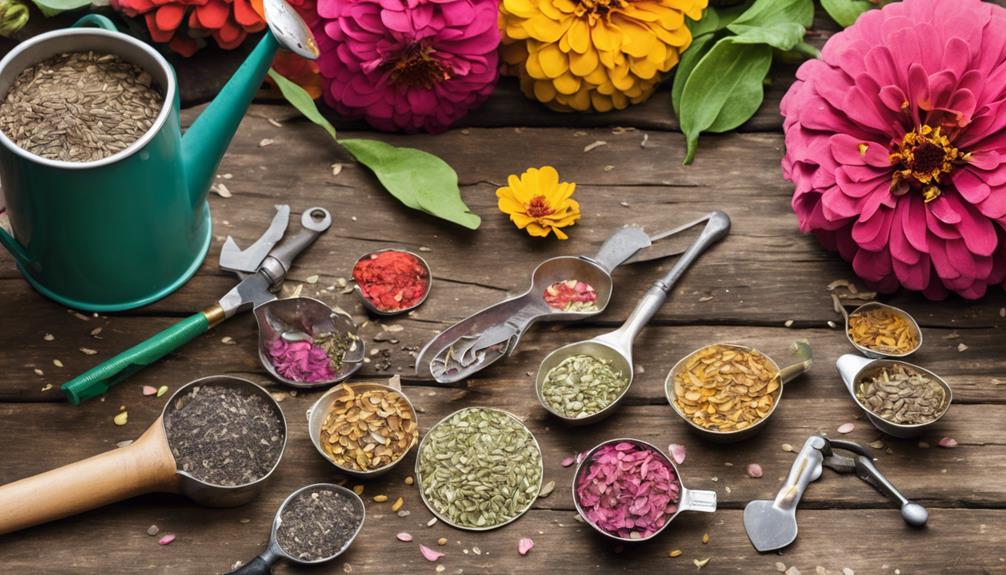
If you want vibrant blooms in your garden late in the season, consider planting zinnias. These easy-to-grow flowers come in a variety of colors, from bright oranges and yellows to soft pinks and whites. Zinnias are perfect for adding a pop of color to your garden when other flowers may be fading.
To plant zinnias, choose a sunny spot in your garden with well-draining soil. Scatter the zinnia seeds over the soil and lightly cover them with a thin layer of dirt. Water the seeds regularly, keeping the soil moist but not waterlogged. Within a few weeks, you should start to see seedlings sprouting up.
Zinnias are known for their long-lasting blooms, making them a great choice for late-season color. They also attract pollinators like butterflies and bees, adding even more life to your garden.
With minimal effort, you can enjoy a stunning display of zinnias brightening up your outdoor space well into the fall.
Cosmos
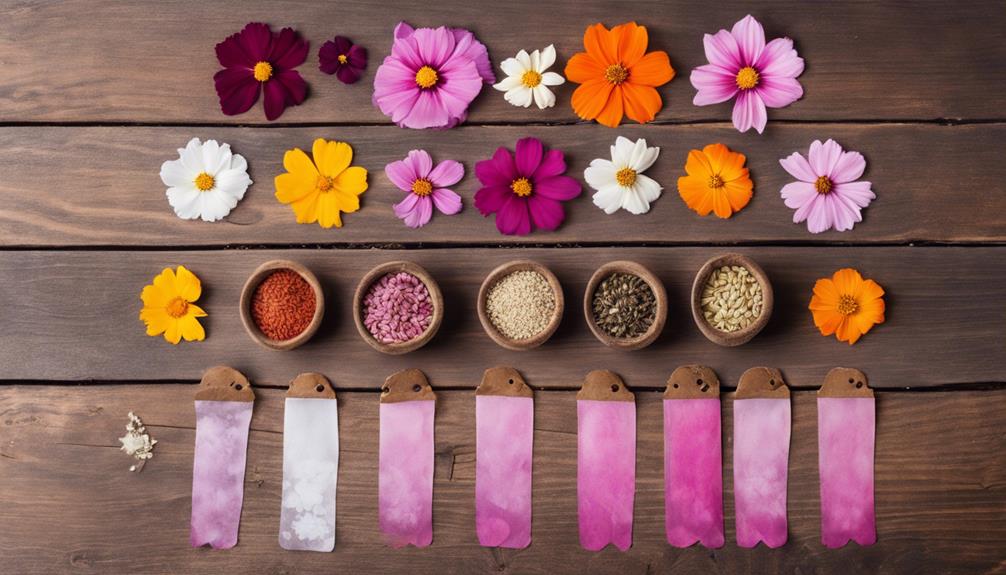
Consider adding cosmos to your garden for a burst of late-season color that complements zinnias beautifully. Cosmos are easy-to-grow annual flowers that bloom in vibrant shades of pink, white, and purple. These daisy-like flowers add a whimsical touch to any garden and attract butterflies and bees with their nectar-rich blooms.
When planting cosmos seeds in July, choose a sunny location with well-draining soil. Scatter the seeds on the soil surface and lightly press them down. Water regularly to keep the soil moist until the seeds germinate, usually within 7-14 days.
Once the cosmos plants have grown a few inches tall, thin them to about 12-18 inches apart to allow for proper air circulation. Cosmos can reach heights of 2-4 feet, depending on the variety, and make excellent cut flowers for bouquets. Deadhead spent blooms to encourage continuous flowering throughout the fall.
With their airy foliage and delicate flowers, cosmos add a graceful touch to late-season gardens and are sure to brighten up your outdoor space.
Sunflowers
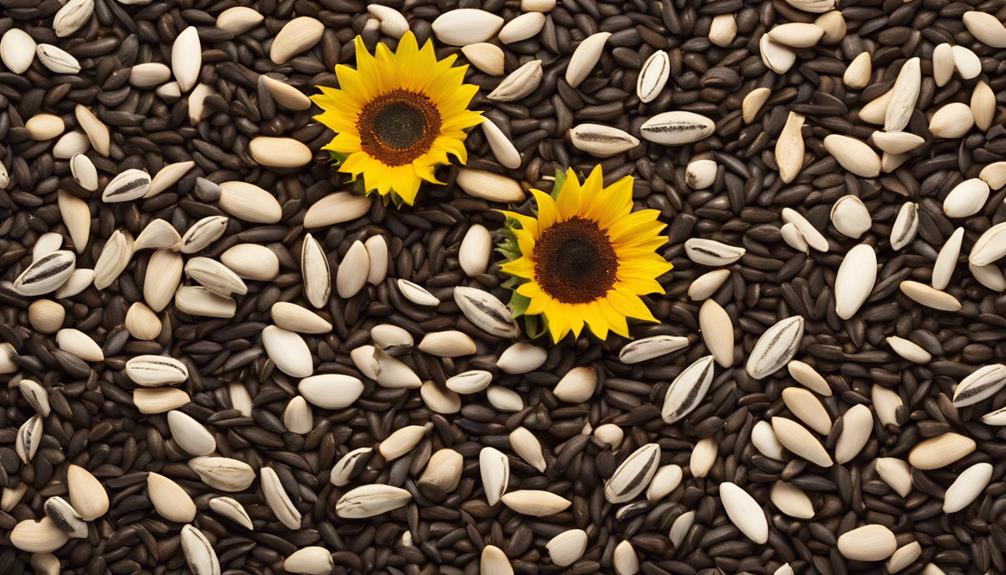
Plant sunflowers in your garden for a bold pop of late-season color and cheerful ambiance. Sunflowers aren’t only beautiful to look at but also attract pollinators like bees and birds, adding life and movement to your outdoor space. These vibrant flowers are easy to grow and bring a sense of joy to any garden.
Here are a few reasons why you should consider planting sunflowers:
- Brighten Your Day: Sunflowers’ sunny blooms will instantly lift your spirits and brighten up any corner of your garden.
- Kid-Friendly: Their large size and cheerful appearance make sunflowers a hit with children, who’ll love watching them grow tall and strong.
- Nature’s Beauty: Sunflowers symbolize adoration, loyalty, and longevity, adding a touch of natural beauty and symbolism to your garden.
- Low Maintenance: Sunflowers are low-maintenance plants that thrive in sunny spots with well-drained soil, making them a hassle-free addition to your garden.
Embrace the beauty and positivity that sunflowers bring, and enjoy their stunning display of late-season color.
Marigolds
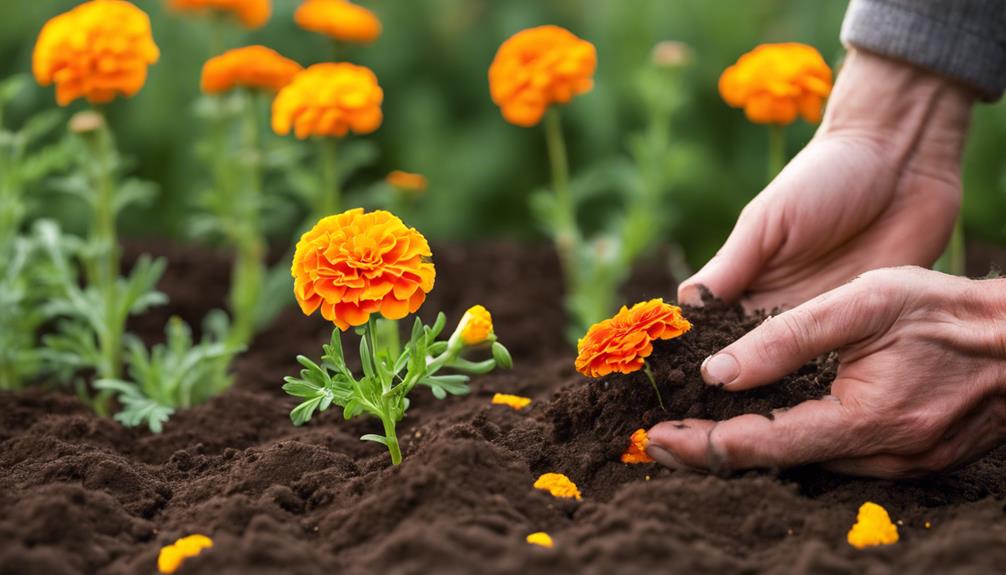
Adding a splash of vibrant color to your garden, marigolds are a delightful choice for late-season blooms. These cheerful flowers come in shades of yellow, orange, and red, brightening up any space. Marigolds are easy to grow from seed, making them a perfect option for both experienced and novice gardeners. They thrive in sunny locations and well-drained soil, requiring minimal maintenance once established.
Here is a table summarizing key information about planting and caring for marigolds:
| Aspect | Details |
|---|---|
| Sunlight | Full sun is ideal for marigolds, ensuring they bloom abundantly. |
| Watering | Water regularly but avoid overwatering to prevent root rot. |
| Soil | Well-draining soil is essential for healthy marigold growth. |
| Maintenance | Deadhead spent flowers to encourage continuous blooming throughout fall. |
With their vibrant hues and easy care requirements, marigolds are a fantastic choice to add a pop of color to your garden as the summer transitions into fall.
Nasturtiums
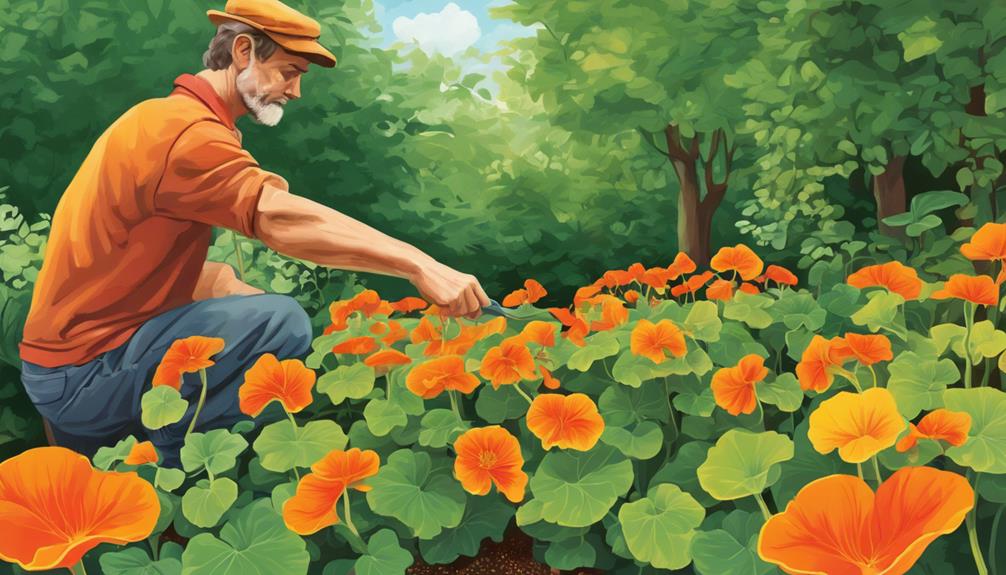
Brightening up your garden with their vibrant blooms, nasturtiums are a lovely choice for adding late-season color. These easy-to-grow flowers not only bring a pop of color but also attract pollinators to your garden. Planting nasturtium seeds in July can lead to a beautiful display of blooms in the late summer and fall.
Here are some reasons why you should consider sowing nasturtiums in your garden:
- Vibrant Hues: Nasturtiums come in a range of colors from fiery oranges and yellows to rich reds, adding a burst of energy to your outdoor space.
- Edible Blooms: Not only are nasturtium blooms visually appealing, but they’re also edible, adding a unique touch to salads or desserts.
- Companion Planting: Nasturtiums can act as a natural pest repellent, protecting your other garden plants from harmful insects.
- Low Maintenance: These resilient flowers are low maintenance and can thrive in various soil conditions, making them ideal for busy gardeners.
Bachelor’s Buttons
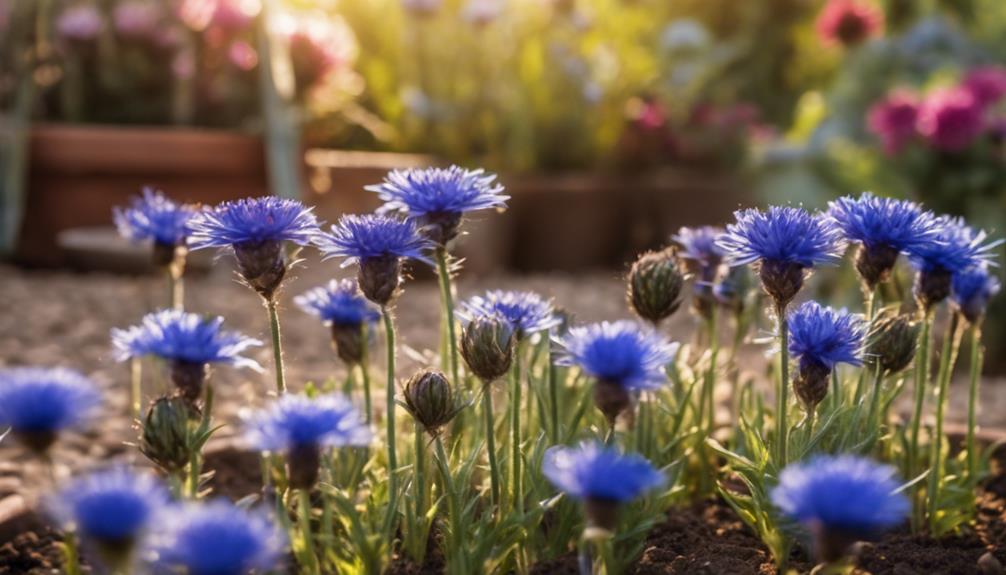
With their charming blue, pink, and white blooms, Bachelor’s Buttons make a delightful addition to any garden seeking late-season color. These easy-to-grow flowers are known for their vibrant hues and ability to attract pollinators such as butterflies and bees.
July is the perfect time to sow Bachelor’s Button seeds for a burst of color in your garden later in the season. These flowers thrive in full sun and well-draining soil, making them a low-maintenance option for both experienced and novice gardeners.
To sow Bachelor’s Button seeds, simply scatter them over prepared soil and lightly press them down. Water the seeds gently, keeping the soil moist but not waterlogged. With proper care, you can expect to see these charming flowers bloom in about 8-10 weeks from sowing.
Bachelor’s Buttons are versatile and can be used in various ways, from border plantings to cut flower arrangements. Their long stems make them an excellent choice for adding height and texture to bouquets.
Frequently Asked Questions
Can These Flowers Survive in Colder Climates?
Yes, these flowers can survive in colder climates. With proper care and attention to temperature requirements, they can thrive even in chilly conditions. Consider providing extra protection during frosty nights for optimal growth.
How Often Should I Water These Seeds?
You should water these seeds consistently to keep the soil moist but not waterlogged. Check the moisture level regularly by feeling the soil. Typically, watering every 1-2 days is recommended, adjusting based on weather conditions.
Do These Flowers Attract Pests or Insects?
You should keep an eye out for pests and insects around those flowers. Regularly inspecting your garden can help you catch any issues early on. Taking preventive measures, like using natural repellents, can also deter unwanted visitors.
Can I Plant These Seeds in Containers?
Yes, you can plant those seeds in containers. Make sure the containers have drainage holes and use a well-draining potting mix. Keep them watered and in a sunny spot for best results.
Are These Flowers Suitable for Beginner Gardeners?
Yes, these flowers are definitely suitable for beginner gardeners. With easy care requirements and simple planting instructions, you’ll have a great experience nurturing these blooms. Enjoy the process and watch your garden flourish!
Content are generated with AI, fact checked by editorial team.
Hi there! My name is Aaron and I am a gardening expert from the United States. I have always had a passion for gardening and have been practicing it for years. I have gained extensive knowledge and experience in gardening.

